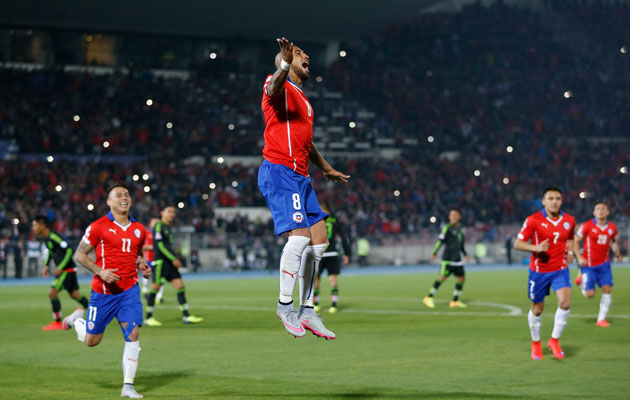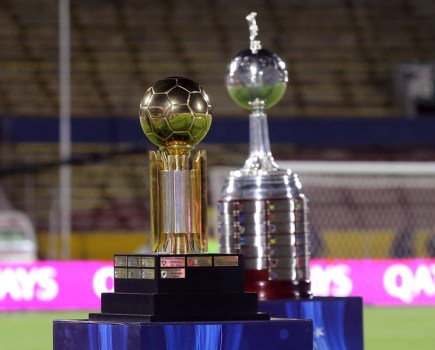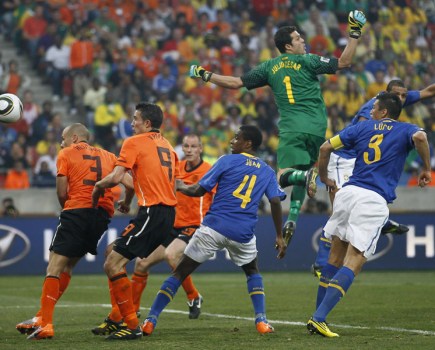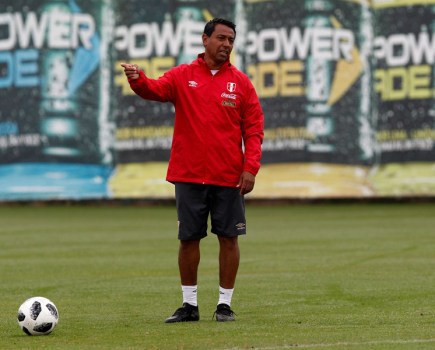There were some bumps along the road, but in the end the three seeded teams all finished top of their Copa America group. This is how it happened
GROUP A
Chile (7 points) and Bolivia (4) qualified, Ecuador (3) and Mexico (2) eliminated
Chile got the competition underway with a nervy 2-0 win over Ecuador, the second half goals both coming at times when the Ecuadorians were looking the better side. There were clearly plenty of first night nerves in the Chilean team, and strange atmosphere in Santiago’s National stadium, with fans apprehensive after months of waiting.
They had more attacking moves to celebrate in the next game against Mexico, especially in the second half, when Chile were back to their fluent best. Their high tempo football, throwing so many players forward, was a delight to watch. The problems came at the other end, where the deficiencies of the defence were cruelly exposed. But if the 3-3 draw was a disappointing result, it was overshadowed by the following day’s events.
Returning to the team’s training camp, Arturo Vidal, tournament top scorer at the time, crashed his Ferrari with alcohol in his system. Amid a national debate coach Jorge Sampaoli insisted that Vidal remain part of the squad. Some sort of closure (though Vidal is facing a criminal investigation) was achieved when Chile, already assured of a quarter final place, turned on the style to beat Bolivia 5-0. The only dark cloud – in four of the last five Copa, the hosts have fallen at this stage, three of those times to Uruguay, Chile’s next opponents.
Despite that humbling, Bolivia, too had already qualified. They opened up with a tame 0-0 draw against Mexico, and then took advantage of some atrocious Ecuadorian first half defending to race into a 3-0 lead. Ecuador came roaring back, scored twice, missed a penalty, laid siege to the Bolivian goal but could not find an equaliser – which meant that their 2-1 win over Mexico was not enough to squeeze them into the last eight.
GROUP B
Argentina (7 points), Paraguay (5) and Uruguay (4) qualified, Jamaica (0) eliminated
With an embarrassment of attacking riches, and the stars seemingly fitter than at last year’s World Cup, this might be Argentina’s year. There were certainly plenty of positive signs as they raced into a 2 goal lead against Paraguay in the opening game. The second half, though, was as extraordinary as it was surprising. Paraguay went chasing the game, giving Argentina numerous chances to kill things off on the counter attack. These were wasted, and with coach Gerardo Martino coming under fire for his substitutions, Paraguay hit back late to secure a draw. Argentina left the game, then, with doubts about their defence and their capacity to last 90 minutes – doubts which were not entirely cleared up by the subsequent two games, even though they won both without conceding.
With Sergio Aguero looking especially sharp they beat Uruguay, but were looking ragged towards the end – and there were even signs of something similar in the glorified training game against Jamaica, which mrked Lionel Messi’s 100th cap. Moreover, only 4 goals in 3 games was a disappointing return for a team with such firepower.
Paraguay came second. Though their only goal that beat Jamaica was something of a gift, their victory was well deserved, and there are signs that Ramon Diaz might be constructing a side capable of both defending doggedly and of taking the initiative when necessary. They completed their group programme unbeaten, closing with a grim 1-1 draw against a Uruguay side making typically solid progress. With just 2 goals conceded in the group phase, the Uruguayans showed that they will not be easy quarter final opponents.
Jamaica, meanwhile, lost all their games by a single goal. So they failed to score, and the two Concacaf teams failed to win a game.
GROUP C
Brazil (6 points), Peru (4), Colombia (4) qualified, Venezuela (3) eliminated
The tightest of the three groups went into the last round with all 4 sides level on points and capable of finishing either top or bottom. It was so close that in their final game Brazil only needed a draw to finish top, but would have been knocked out with a defeat.
It was a week dominated by Brazil captain Neymar, who in stoppage time of the opening game against Peru capped a fine individual display with a pass of almost absurd vision to set up the winner for Douglas Costa. A shaky performance seemed to highlight just how dependent the team were on its number ten – who was marked out of the next game by a superb defensive midfield performance from Colombia’s Carlos Sanchez. Cancelling out Neymar gave Colombia the platform to win a scrappy game, and also frustrated the Brazil captain to such an extent that he was sent off after the final whistle, and made matters worse by abusing the referee. Neymar was banned for four games – effectively removed from the tournament. Under pressure, how would Brazil get by without him? In the event Willian stepped up to play the lead role in the 2-1 win over Venezuela and Brazil had shown, to themselves as well as to everyone else, that they could play without their captain.
Despite their victory over Brazil, Colombia played a disappointing group programme. The absence through injury of Abel Aguilar was keenly felt – the midfield lacked his ability to link the team together. Moreover, Radamel Falcao Garcia did not look sharp, and the need to play another striker alongside him put more pressure on a central midfield pairing (Sanchez and Edwin Valencia) more equipped to mark than to create. It is no coincidence that in the two games where Colombia were obliged to take the initiative (against Venezuela and Peru) they failed to score.
Peru finished above them by virtue of having scored a goal more – the decisive moment in their campaign was a 1-0 win over a Venezuela side reduced to ten men in the first half.







